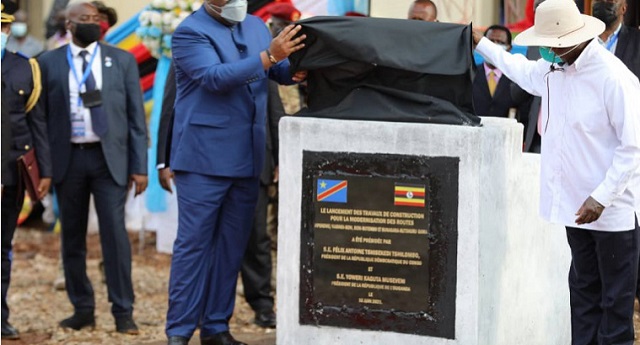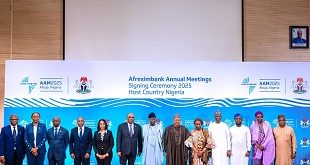
Shortly after his controversial electoral victory in early 2019, the President of the Democratic Republic of Congo (DRC) Felix Tshisekedi sought to get his country admitted into the East African Community. Recently, the East African Community ministers recommended the DRC’s admission, a decision set to be formalised by the bloc’s presidents when they meet on March .19. Regional integration expert Jonathan Ang’ani Omuchesi discusses key points of the decision.
What’s the state of East African Community integration?
East African Community is one of the most vibrant and best performing in Africa. This is according to the African Regional Integration Index which ranks blocs on five aspects of integration – trade, productive, macroeconomic, infrastructural and movement of people. Currently, it has six members: Burundi, Kenya, Rwanda, South Sudan, Tanzania, and Uganda.
East Africa’s integration is envisioned under four pillars. These are the customs union, the common market, the monetary union, and the political federation. So far, the bloc has been implementing protocols on a customs union and a common market. These have helped improve trade and investments in the region since 2006 and boosted country relations.
Under the customs union protocol taxes on goods produced within the region have been eliminated. East Africa is also applying a common external tariff on imports from outside the region.
In the long run, an operational customs union should open up the regional economy so that small economies are able to gain access to industries that would otherwise be out of their reach.
For its part, the purpose of a common market is to ease cross-border movement of goods, persons and workers. Its implementation has seen the east African governments harmonise immigration procedures and order border posts to operate for 24 hours. Some of the governments in the region, notably Rwanda and Kenya, have also waived the work permit fee for citizens from the region.
The bloc is now preparing the ground for its third pillar, the monetary union. This began with the adoption and signing of the East African Monetary Union Protocol on 30 November 2013. The protocol set a timeline of 10 years within which the partner states need to have a common currency. That’s in 2023, a deadline that’s unlikely to be met. There has been mixed progress in the implementation of agreed action on this front.
How do countries get admitted?
The criteria for admission into the bloc is provided under Article 3 of the East African Community treaty signed in 1999. The regional law provides the following grounds for admission of a new member:
- acceptance of the Community as set out in the East African Community Treaty;
- adherence to universally acceptable principles of good governance, democracy, the rule of law, observance of human rights and social justice;
- potential contribution to the strengthening of integration within the East African region;
- geographical proximity to and interdependence between it and the partner states;
- establishment and maintenance of a market driven economy; and
- social and economic policies being compatible with those of the Community.
So far, the body has had three admissions: Rwanda and Burundi in 2007 and South Sudan in 2016. The DRC shares borders with Tanzania, Burundi, Rwanda, Uganda and South Sudan. There has been opposition to its plan to join the East African Community due to its past human rights record.
What does the East African Community gain?
The DRC’s admission would give the bloc its first port on the Atlantic coast. At the moment, the region relies on Indian Ocean-based seaports of Kenya and Tanzania for trade with the rest of the world. The challenge of intermittent piracy off the Somalia coast has exposed the need for an alternative trade route.
The DRC is also set to significantly expand the regional trading bloc’s size. The DRC’s geographical area is far much larger than all the six East African states put together. The DRC has a geographical area of 2.4 million sq km while the bloc is about 1.8 million sq km. The additional geographical area – known uniquely for its copper, coltan, cobalt, tin and other minerals – is set to boost East Africa’s profile as an investment destination.
On a world stage, the East African Community gains a bigger clout with the DRC’s huge population (consumer base) of about 90 million people and an economy of nearly US$50 billion. It is estimated that the bloc has a population of 177 million people and an economy of US$193.7 billion.
What’s in it for the DRC?
The DRC is already doing substantial trade with the East African Community bloc which could benefit from lower or eliminated tariffs. Goods produced in the DRC will no longer be subjected to customs taxes at any of the region’s border points.
It already has established trade relations with Rwanda, Burundi and Uganda. For imports, parts of the DRC rely on the trade corridor that runs from Mombasa port via Uganda, Rwanda and Burundi. These connections are set to firm up as national agencies of the East African governments ease tariffs and administrative barriers on the new bloc member.
Does it matter that this is the third bloc the DRC is joining?
Generally, membership in more than one customs union is technically impossible. Firstly, one country cannot apply different common external tariffs. Secondly, integration agenda differs from one bloc to the next meaning overlapping membership may lead a country to conflicting obligations. According to the World Trade Organisation, the practice hurts global trade liberalisation, especially when affected traders have to meet multiple sets of rules.
But analysis of the treaties of the Southern African Development Community, the East African Community and the Common Market for Eastern and Southern Africa shows they do not preclude members from maintaining prior trade arrangements or entering into new ones.
The DRC is already a member of the Southern African Development Community and the Common Market for Eastern and Southern Africa. But it won’t be the only East African Community country with overlapping membership of regional blocs. Kenya, Uganda, Rwanda and Burundi are members of the Common Market for Eastern and Southern Africa while Tanzania is a member of Southern African Development Community.
The East African Community, for instance, has not been able to establish a full customs union since it had to allow Tanzania to grant preferences to its southern Africa partners.
The three blocs are currently harmonising their agenda and laws with the aim of integrating their economies and markets. This fits into the broader objective of the African Union, of accelerating economic integration of the continent.
****
Jonathan Ang’ani Omuchesi is a lecturer in Governance and Regional Integration, Catholic University of Eastern Africa. Source: The conversation
 The Independent Uganda: You get the Truth we Pay the Price
The Independent Uganda: You get the Truth we Pay the Price


